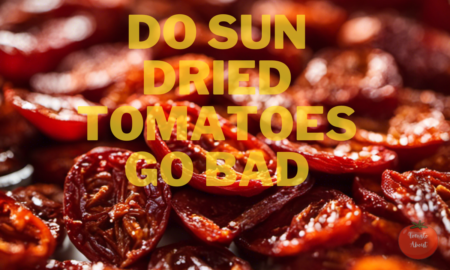Are you tired of seeing your precious tomato plants toppling over or becoming a tangled mess? Don’t worry; we’ve got you covered! Tying up tomato plants is an important step in ensuring a bountiful harvest of delicious, juicy tomatoes. By providing proper support, you can prevent diseases, pests, and damage, while also improving air circulation and fruit quality. In this comprehensive guide, we’ll explore the four best methods to tie up your tomato plants, ensuring a thriving and productive garden.
Why is Tying Up Tomato Plants So Important?
Before we dive into the techniques, let’s understand the significance of tying up tomato plants. As these plants grow taller and bear the weight of developing fruits, they become susceptible to various challenges:
- Disease Prevention: When tomato plants lie on the ground, their leaves and fruits come into direct contact with soil, increasing the risk of soil-borne diseases like early blight and other fungal infections.
- Pest Control: By keeping your plants off the ground, you can reduce the chances of pests like slugs, snails, and even rodents from accessing and damaging your tomatoes.
- Air Circulation: Proper support and spacing between plants allow for better air circulation, reducing the likelihood of fungal diseases and promoting healthy growth.
- Fruit Quality: Tomatoes that are supported and kept off the ground tend to ripen more evenly and develop a better flavor, color, and shape.
Now that you understand the importance of tying up your tomato plants, let’s explore the four best methods to achieve this.
What’s the Best Way to Tie Up Tomato Plants?
There are several methods to choose from when it comes to tying up tomato plants. Each approach has its own advantages and suits different gardening styles or plant varieties. So, how do you decide which method is right for you? Don’t sweat it; we’ve got you covered with a comprehensive guide to the four best techniques.
What Are the Best Materials for Tying Up Tomatoes?
Before we dive into the tying methods, let’s quickly cover the materials you’ll need. The good news? You probably have many of these items lying around already:
- Stakes or poles (wooden, bamboo, or metal)
- Soft plant ties, twine, or strips of cloth
- Tomato cages or sturdy trellis netting
When selecting ties, aim for something soft that won’t cut into the plant stems as they grow. Natural materials like cotton or jute twine work well. As for stakes, you can use just about anything as long as it’s slim enough to tie the string around the plant and the stake. Get creative with repurposed materials like wooden dowels or slender metal rods!
1. The Classic Stake Method: A Timeless Approach
The stake method is a tried-and-true technique that has been used by gardeners for generations. It involves placing a sturdy stake (often made of wood or metal) next to the tomato plant and tying the main stem to the stake as it grows. This method is particularly effective for determinate (bush) tomato varieties, which tend to have a more compact growth habit.
Here’s how to tie up your tomato plants using the stake method:
- Choose a sturdy stake that’s around 5-6 feet tall and as thick as your thumb (or slightly thicker).
- Drive the stake into the ground about 6-8 inches away from the base of the plant, ensuring it’s firmly anchored in the soil.
- As the plant grows, use soft plant ties (like strips of cloth or stretchy plant tape) to gently secure the main stem to the stake every 8-10 inches.
- Be careful not to tie the plant too tightly, as this can restrict growth and cause damage.
- Prune off any suckers (side shoots) that develop along the main stem to encourage better air circulation and fruit production.
The staking method is simple, effective, and perfect for gardeners who prefer a low-maintenance approach. However, it may not be the best choice for indeterminate (vining) tomato varieties, which can quickly outgrow a single stake.
2. The Cage Method: A Contained Solution
If you’re dealing with indeterminate tomato varieties or simply prefer a more hands-off approach, the cage method might be the way to go. This technique involves placing a tomato cage (typically made of sturdy wire or mesh) around the plant and allowing the vines to grow within the confines of the cage.
Here’s how to set up a tomato cage:
- Choose a cage that’s at least 5-6 feet tall and 18-24 inches wide. The wider the cage, the better it can accommodate the plant’s growth.
- Position the cage over the plant when it’s still young, pushing the legs of the cage a few inches into the soil to secure it.
- As the plant grows, gently guide the main stem and vines through the openings in the cage, allowing them to sprawl and weave through the mesh.
- Prune off any suckers or vines that grow outside the cage to keep the plant contained.
The cage method is perfect for busy gardeners who don’t have time for frequent tying and pruning. It also allows for better air circulation and easier harvesting, as the fruit is contained within the cage. However, it’s important to choose a sturdy cage that won’t collapse under the weight of the plant and its fruit.
3. The Trellis Method: A Vertical Masterpiece
If you’re working with limited space or simply prefer a more visually appealing solution, the trellis method might be the perfect fit. This technique involves training the tomato plant to grow vertically along a trellis or other supportive structure, creating a stunning and space-saving display.
Here’s how to set up a trellis for your tomato plants:
- Choose a sturdy trellis made of wood, metal, or durable plastic. It should be at least 6-7 feet tall and securely anchored in the ground or a planter.
- Plant your tomatoes about 6-8 inches away from the base of the trellis.
- As the plant grows, use soft plant ties or clips to gently secure the main stem and vines to the trellis, spacing the ties every 8-10 inches.
- Prune off any suckers or vines that grow away from the trellis to maintain a neat and controlled growth pattern.
- For indeterminate varieties, you may need to occasionally weave the vines horizontally along the trellis to prevent them from becoming too heavy and drooping.
The trellis method not only saves space but also showcases your tomato plants in a visually stunning way. It’s perfect for gardeners with an eye for design or those who want to maximize their growing area. However, it does require more frequent tying and pruning to maintain the desired growth pattern.
4. The Florida Weave Method: A Tailored Approach
If you’re growing indeterminate tomato varieties in a row or raised bed, the Florida weave method might be the perfect solution. This technique involves weaving the tomato vines through a series of horizontal strings or wires, creating a supported and organized growth pattern.
Here’s how to set up the Florida weave:
- Install sturdy stakes or posts at each end of your tomato row, spaced about 3-4 feet apart.
- Attach a horizontal string or wire to the end posts at around 6 inches from the ground. This will be the first level of the weave.
- As the tomato plants grow, gently guide the main stems between the horizontal string/wire and the stakes, alternating between plants.
- Once the plants reach the next desired height (usually 12-18 inches), add another horizontal string/wire at that level and repeat the weaving process.
- Continue adding horizontal strings/wires and weaving the vines as the plants grow taller, typically every 12-18 inches.
- Prune off any suckers or vines that grow outside the weave to maintain a neat and organized pattern.
The Florida weave method is a labor-intensive but highly effective way to support indeterminate tomato varieties. It not only provides excellent support but also allows for better air circulation and easy harvesting. However, it does require more initial setup and ongoing maintenance compared to other methods.
Choosing the Right Tomato Variety
Before we wrap up, it’s important to note that not all tomato varieties are created equal when it comes to tying and support needs. Here’s a quick overview of the different types:
- Determinate tomatoes: These varieties grow to a compact, predetermined size and produce their entire crop over a short period. They typically don’t require extensive tying or support beyond a simple cage or stake.
- Indeterminate tomatoes: As the name suggests, these tomato plants grow indefinitely throughout the season, producing a continuous crop. They benefit greatly from sturdy tying and support methods like the Florida weave or cage-and-stake combo.
- Semi-determinate tomatoes: This hybrid variety exhibits characteristics of both determinate and indeterminate types. They may require moderate tying or support, depending on their specific growth habits.
When selecting your tomato varieties, consider not only their flavor profiles but also their growth patterns and support needs. This will help ensure you choose the most appropriate tying method for a successful harvest.
Tips for Successfully Tying Up Tomato Plants
Ready to give one of these tomato-tying methods a try? Keep these pro tips in mind:
- Check tied plants regularly, adjusting ties and adding new ones as needed to accommodate growth
- Use soft, pliable ties that won’t cut into stems, and leave a bit of slack for flexibility
- Prune plants consistently to maintain an open, orderly structure
- For extra support, you can combine methods like staking with cages or trellises
- Always handle plants gently when tying to avoid damaging stems
With a little time and care, your well-supported tomato crop will be the envy of the neighborhood! Now that you’re a pro at tying, why not check out our related blog posts on tomato growing for more great advice?
So don’t let those precious tomatoes go to waste – keep ’em up off the ground with sturdy tying methods. Your future self will thank you when it’s time to harvest those lush, juicy fruits!


